The world’s largest passenger planes are engineering marvels, designed to carry hundreds of passengers comfortably over long distances. These giants of the skies not only boast impressive seating capacities but also feature advanced technology and spacious interiors that enhance the flying experience. From luxurious two-deck cabins to high-efficiency engines, they have transformed the way we travel across continents. Here’s a look at some of the biggest passenger planes, showcasing their unique capacities and innovations that make them true icons of modern aviation.
Boeing 777-200LR
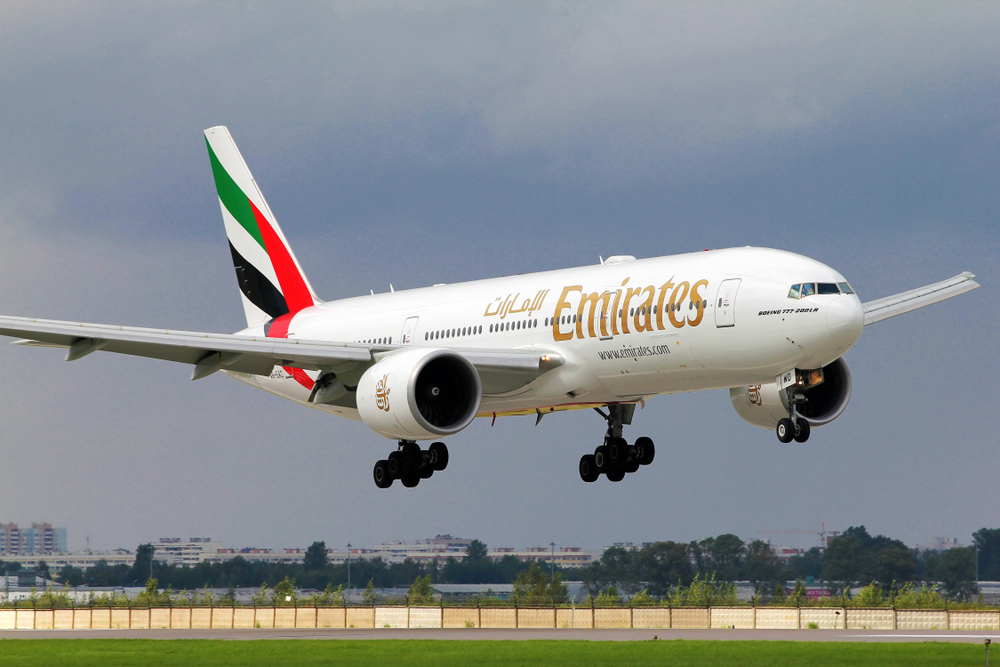
The Boeing 777-200LR, also known as the “Worldliner,” holds the title of longest-range passenger aircraft among the 777 series. Introduced in 2006, it seats up to 317 passengers in a two-class configuration. Equipped with GE90-110B1 engines, it can fly up to 8,555 nautical miles, perfect for ultra-long-haul flights. Airlines such as Qatar Airways and Air India use this model for some of the longest routes, including Doha to Auckland. Its 63.7-meter wingspan and 63.7-meter length ensure passenger comfort, making it suitable for extended flights. Its range and fuel efficiency make it popular for distant international destinations. With a maximum takeoff weight of 766,800 pounds, this aircraft exemplifies versatility and endurance in long-haul travel. Enhanced fuel capacity and optimized wing design support its impressive range capabilities. This model holds a record for long-distance flights, making it invaluable for connecting distant destinations.
Boeing 777-9X
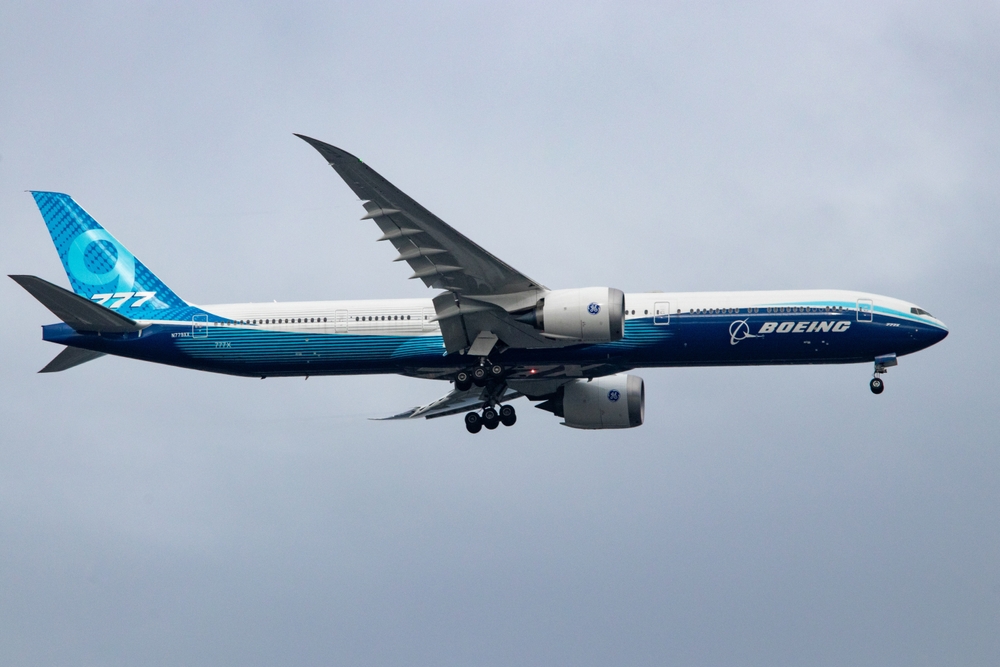
The Boeing 777-9X is the latest and largest variant of the Boeing 777 family, designed to accommodate up to 426 passengers in a two-class configuration. Expected to enter service by 2025, it has a length of 76.7 meters, making it the longest passenger aircraft in the world. It includes features like folding wingtips, extending its wingspan to 71.8 meters while maximizing gate compatibility at airports. Powered by General Electric’s GE9X engines, it has a range of around 7,285 nautical miles, positioning it as a future choice for ultra-long-haul flights. Major airlines such as Emirates, Qatar Airways, and Lufthansa have already placed orders, anticipating its role in high-capacity international routes. This aircraft promises significant reductions in fuel consumption and emissions compared to earlier 777 models. It also incorporates enhanced cabin features like larger windows and higher ceilings, improving passenger experience. With its spacious layout and advanced technology, it aims to be a cornerstone of future international fleets. Its fuel efficiency and high passenger capacity make it appealing for global carriers.
Airbus A350-1000
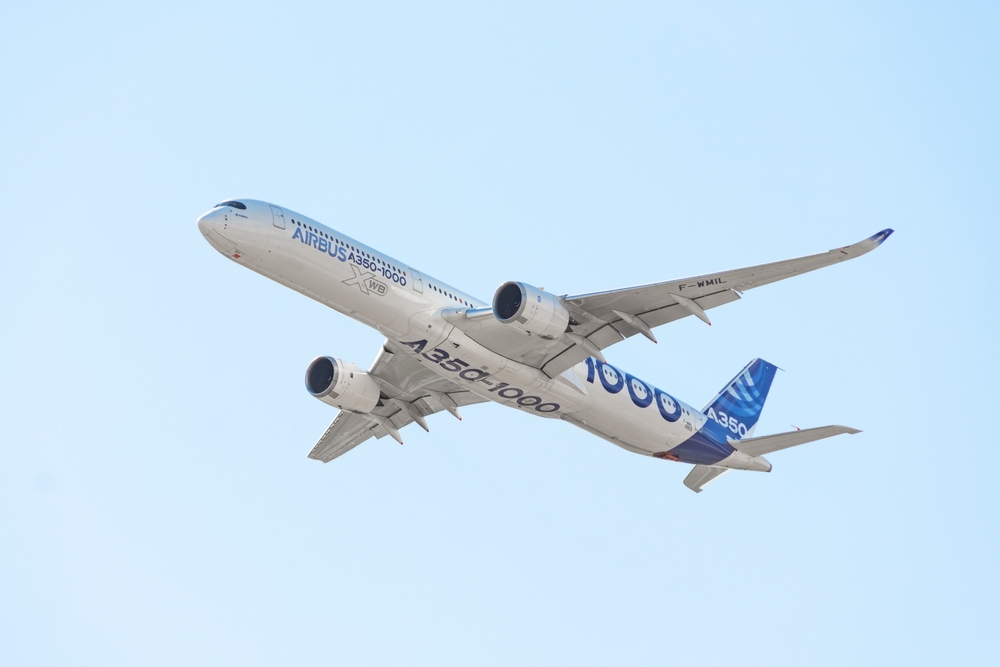
The Airbus A350-1000, the largest variant in the A350 series, is renowned for its advanced design and spacious interior. First delivered in 2018, it can carry up to 366 passengers in a three-class configuration, or a maximum of 440 in a single-class layout. It has a wingspan of about 64.8 meters and measures 73.8 meters in length, making it one of the largest twin-engine jets in operation. Airlines such as Qatar Airways and Cathay Pacific use it on major international routes across continents, including Europe, Asia, and North America. It’s powered by fuel-efficient Rolls-Royce Trent XWB engines, allowing for nonstop flights of over 8,700 nautical miles. Known for its quiet cabin and reduced emissions, this model supports environmentally conscious air travel. Its lightweight materials and advanced aerodynamics position it at the cutting edge of modern aviation. Larger windows and enhanced air quality systems add to passenger comfort, making it a favorite for long-haul journeys. It is also popular for its eco-friendly features, aligning with sustainable aviation goals.
Airbus A350-900
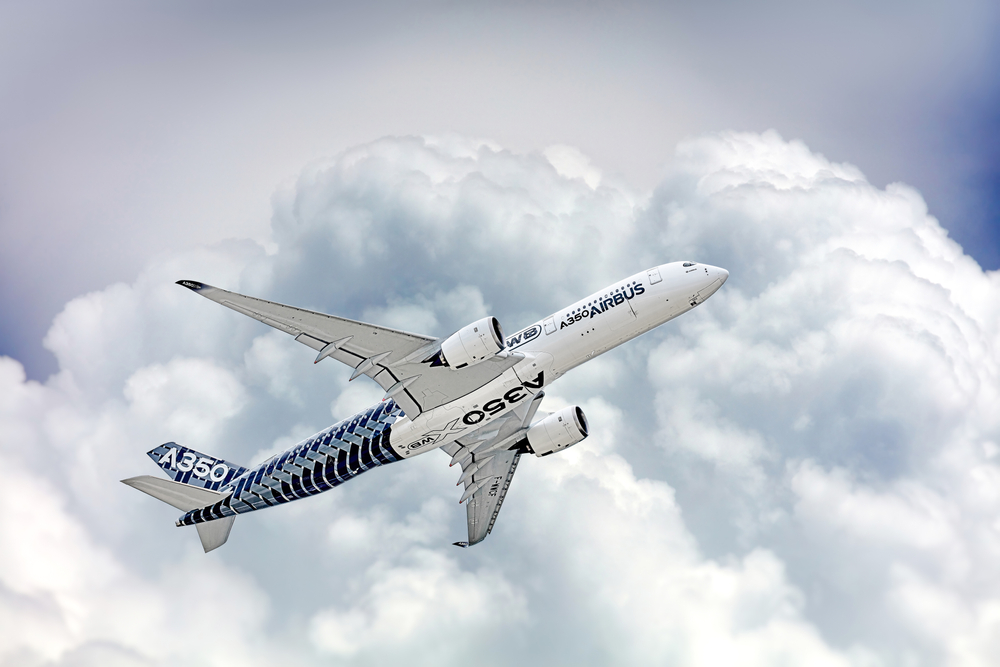
The Airbus A350-900 is a twin-engine wide-body aircraft with a passenger capacity of up to 440 in a single-class configuration. Entering service in 2015, it has a wingspan of approximately 64.8 meters and a length of 66.8 meters, providing airlines with a flexible solution for long-haul routes. Qatar Airways was the launch customer for this model, which has since become popular with airlines like Delta and Singapore Airlines due to its impressive range of up to 8,300 nautical miles. Powered by Rolls-Royce Trent XWB engines, it is recognized for its fuel efficiency, burning 25% less fuel than similar previous-generation aircraft. Its cabin offers passengers a quieter and more comfortable experience with high ceilings, improved air quality, and larger windows. This model also prioritizes sustainability with lower CO2 emissions, aligning with industry goals for greener aviation. Its advanced materials and aerodynamic design allow it to achieve exceptional performance. Its balance of range, efficiency, and passenger comfort makes it highly valued among airlines focused on long-haul service.
Boeing 787-10 Dreamliner
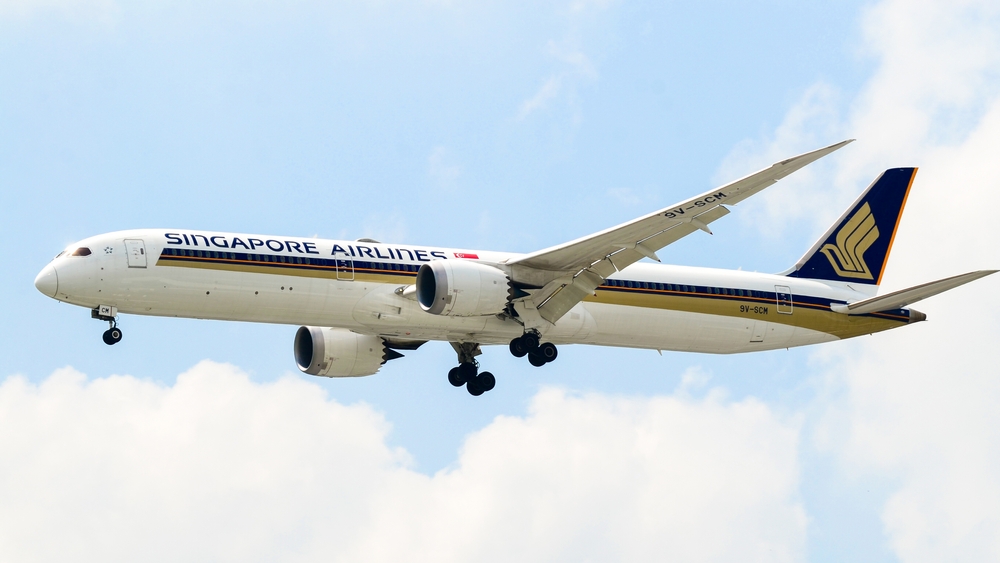
The Boeing 787-10 is the largest variant in the Dreamliner series, with a seating capacity of up to 440 in a single-class configuration. This model, introduced in 2018, extends the popular 787 family with a length of 68 meters and a wingspan of approximately 60 meters. Operated by airlines like Singapore Airlines and United, it is primarily used on high-demand routes due to its fuel-efficient design, powered by either Rolls-Royce Trent 1000 or GE GEnx engines. With a range of about 6,430 nautical miles, it serves regional and some transatlantic routes efficiently. Its carbon-fiber fuselage contributes to reduced weight, enhancing its fuel efficiency and range. As one of the most environmentally friendly aircraft, it offers passengers a comfortable cabin experience with advanced humidity and lighting controls to reduce jet lag. The aircraft’s larger windows and smoother ride, thanks to advanced aerodynamics, make it a favorite among long-haul travelers. Its efficient design is ideal for airlines seeking a balance between capacity and operational cost.
Airbus A330-900neo
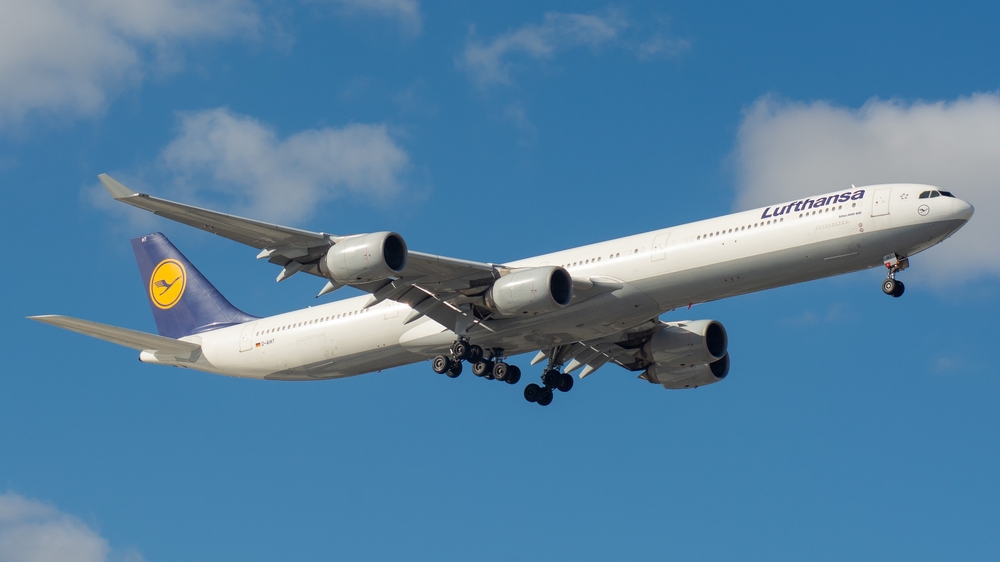
The Airbus A330-900neo is the largest in the A330 family, offering a capacity of up to 460 passengers in a high-density, single-class layout. Introduced in 2018, the A330neo series features advancements in fuel efficiency, with the -900 variant powered by Rolls-Royce Trent 7000 engines. It has a wingspan of about 60 meters and a length of 63.7 meters, positioning it as a spacious option for mid-to-long-haul routes. Airlines like Delta and TAP Air Portugal use it on various transatlantic and intercontinental flights, taking advantage of its extended range of over 7,200 nautical miles. Its interior is designed with passenger comfort in mind, incorporating wide seats and large windows. Although smaller than some other wide-body jets, its fuel efficiency makes it popular for routes that don’t require the immense capacity of larger aircraft. It stands out for its environmental benefits, with 14% less fuel burn than older A330 models. It also includes Airbus’s Airspace cabin, featuring improved lighting and quieter operation.
Airbus A340-600
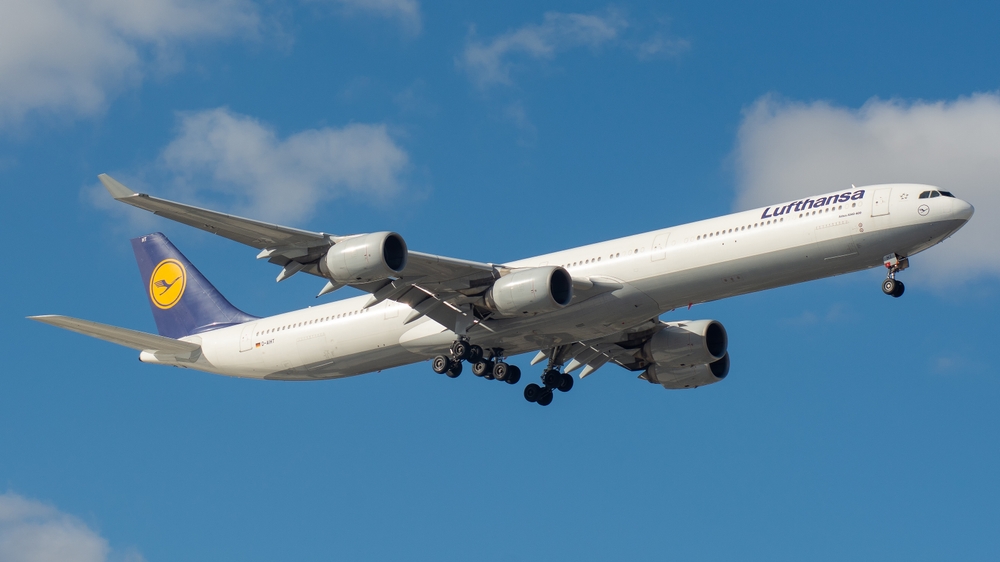
The Airbus A340-600 is a long-range, wide-body aircraft introduced in 2002, designed for both high capacity and extended flights. It can seat up to 380 passengers in a typical three-class configuration or 475 in a single-class setup. Measuring 75.3 meters long and with a wingspan of 63.4 meters, it was developed to handle high-demand, long-haul routes. Airlines like Lufthansa and South African Airways have been key operators, utilizing it for major international routes. Known for its spacious cabin, it remains popular for routes needing substantial passenger loads. Despite being retired by some airlines due to operational costs, it continues to fly for specific routes across Europe, Africa, and Asia. The model’s four-engine setup is a unique feature in an industry shifting to twin-engine designs. Its durability has extended its operational life, especially on high-capacity routes. Its spacious cabins offer comfort for long journeys, maintaining its appeal.
Boeing 777-300ER
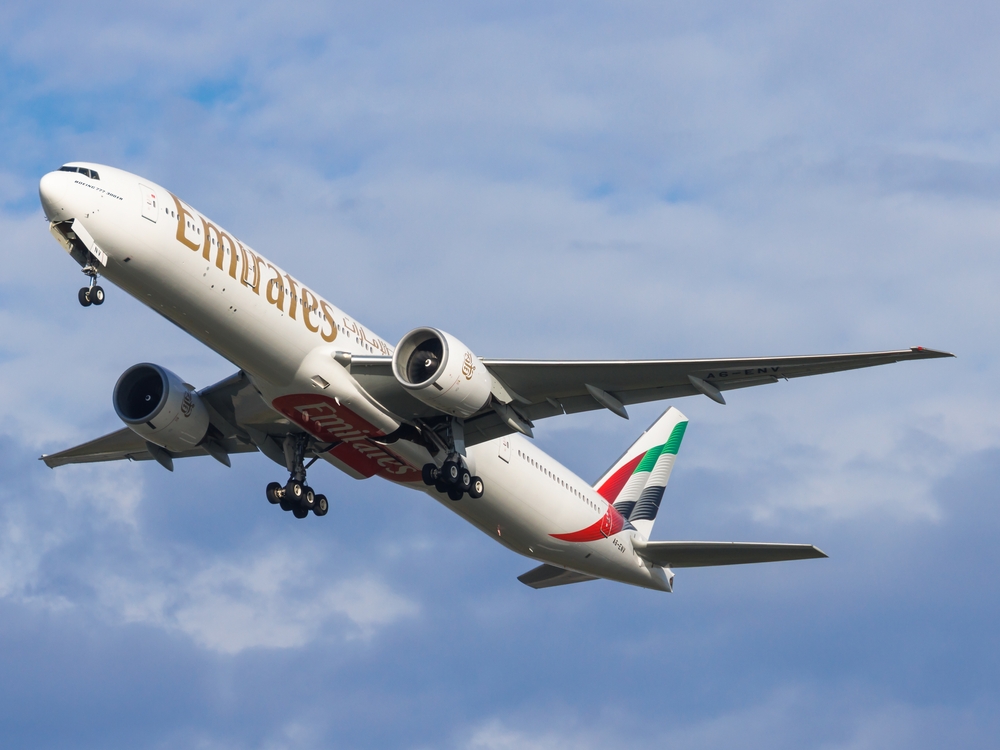
The Boeing 777-300ER is a leading long-haul aircraft, known for its balance of passenger capacity and fuel efficiency. It can carry up to 550 passengers in a single-class configuration or around 396 in a two-class setup. Emirates is the largest operator, using it on extensive routes across continents, including popular connections between North America, Europe, and Asia. Powered by the GE90-115B engines, it has an extended range of 7,370 nautical miles, ideal for long-haul flights. With a wingspan and length both extending over 64 meters, it provides spacious cabins that enhance passenger comfort. As one of Boeing’s most successful models, it has set a standard for long-distance travel reliability and performance. Its combination of capacity and fuel efficiency makes it a favorite for airlines worldwide. The upcoming 777X builds on the 777-300ER’s success with greater capacity and efficiency.
Boeing 747-8
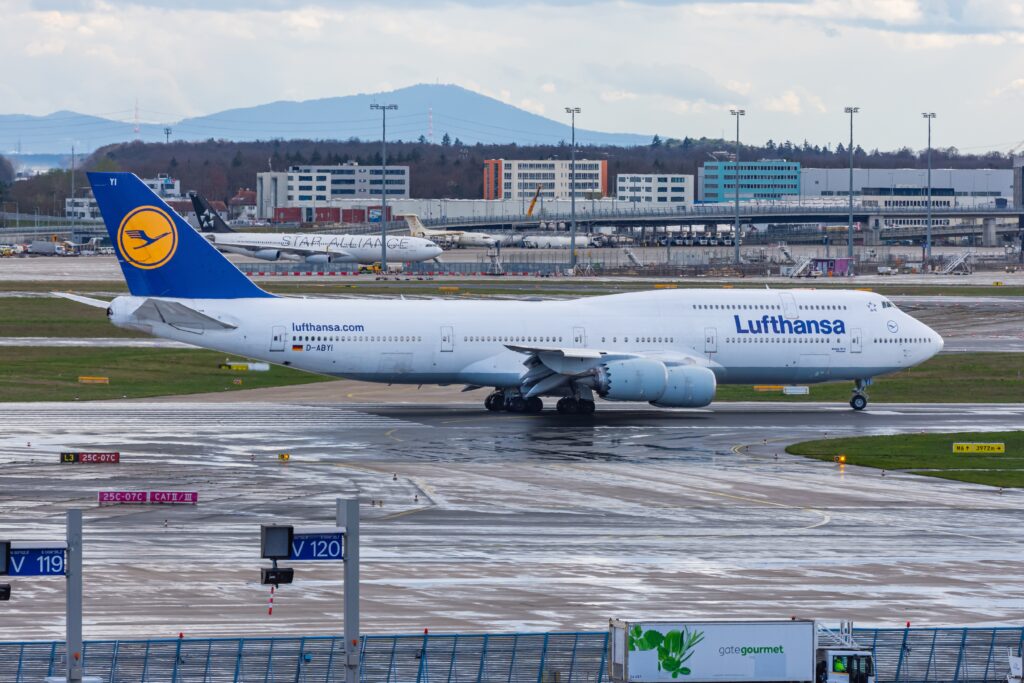
The Boeing 747-8, the latest in the iconic 747 series, remains one of the largest commercial aircraft globally. It can carry up to 605 passengers in a single-class configuration or around 467 in a three-class layout. Lufthansa, Korean Air, and Air China are key operators, utilizing it on long-haul routes in Europe, Asia, and North America. Known for its unique upper deck and stretched fuselage, it extends to a length of 76.3 meters, with a wingspan of 68.4 meters. Equipped with GEnx-2B67 engines, it offers impressive fuel efficiency and a range of 8,000 nautical miles. Although Boeing has ended production of the 747 series, this model continues to operate due to its reliability and spacious design. Its spacious interior and iconic silhouette make it a memorable aircraft for passengers and aviation enthusiasts alike. Its noise-reduction technology enhances passenger comfort, and it remains a symbol of enduring aviation legacy.
Airbus A380

The Airbus A380 is the largest passenger airliner in the world, recognized for its massive two-deck structure and unmatched capacity. Entering service in 2007, it can seat up to 853 passengers in an all-economy configuration, though most airlines use it for around 575 in a three-class layout. It has a wingspan of nearly 80 meters and a length of about 73 meters, making it the heaviest and most spacious passenger aircraft, with a maximum takeoff weight of 1.2 million pounds. Emirates is the largest operator, flying it on busy long-haul routes from Dubai to cities worldwide. Known for its quiet cabins, it offers an enhanced passenger experience on extended flights. However, due to its size and operating costs, some airlines are gradually phasing it out. Despite reduced production, it remains a symbol of luxury and advanced engineering in commercial aviation. It features state-of-the-art flight controls and efficient engines, optimizing fuel usage over long distances.
This article originally appeared on Rarest.org.
More from Rarest.org
20 Keystone Species That Play a Crucial Role in Their Habitats

Keystone species are essential to maintaining the balance of their ecosystems. Without them, the structure of the habitat could change dramatically. These species often influence many other organisms in their environment, helping to regulate populations and maintain biodiversity. Read More.
20 Legendary Cities Lost to Time and Rediscovered

For centuries, the world has witnessed the rise and fall of great civilizations. Many of these cities, once bustling with life, were buried by time and forgotten by history. Read More.
16 Unique Flora and Fauna Found Only in Isolated Ecosystems

Isolated ecosystems have given rise to some of the most unique plants and animals on Earth. These regions, often cut off from other landmasses for millions of years, allow species to evolve in ways that are found nowhere else. Read More.
